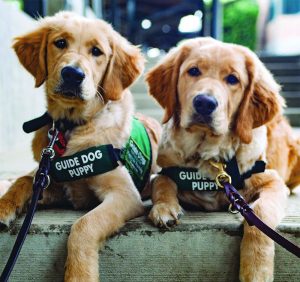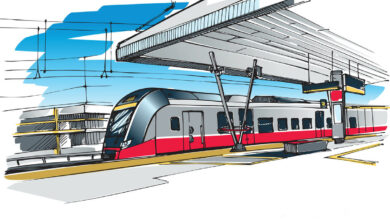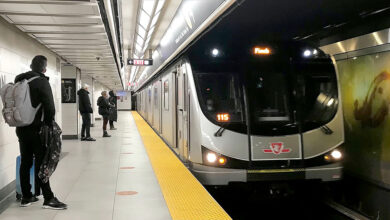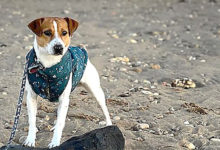Way more than guiders
There’s a constant search for independence and autonomy in each and every human being, but especially in the daily life of a person with a disability.

Photo: DR
In the case of a blind person, there is a very special canine friend who comes to guide them – figuratively and literally speaking. Taking on an extremely important role, these guide dogs turn into the eyes of those who do not see, establishing a connection of both complicity and mutual dependence between the dog and its owner.
During pandemic times, we wanted to understand how these special animals are facing the new rules of social behaviour, so we had the opportunity to speak with Victoria Nolan, the Head, Stakeholder Relations and Community Engagement for the Guide Dog program at CNIB, a non-profit organization dedicated to blind people.
Milénio Stadium: I would like to start by asking you to give us an insight of the type of the type of work you do at your institution – and maybe tell us how a blind person can qualify to get a guide dog?
Victoria Nolan: My role is to be the link between the program and the community and the face of the program. I have a guide dog myself. A lot of my work involves advocacy to ensure the public is aware of the laws around access for guide dogs and their owners – they are allowed anywhere the public can go.
MS: How can a blind person qualify to get a guide dog? What is the process? What phases do people go through until they could have a guide dog?
VN: In order to be able to apply for a guide dog, a person needs to be diagnosed with vision loss and needs to demonstrate that having a guide dog would improve their quality of life. An important first step is that they are able to use a mobility cane (white cane) to travel independently around their community including the ability to cross streets by listening to the traffic.
The process involves a series of interviews including an in-person visit so that instructors can assess the client’s needs as well as the qualities they need in their dog. When the instructor has found a suitable match, the client will train with their new dogs for about three weeks so they can learn to work together.
MS: How long does it take to prepare a dog to guide a blind person?
VN: It takes 18-24 months to prepare a dog to be a guide dog. Approximately the first year is spent with puppy raisers where the dogs learn basic obedience and how to handle many different experiences like being in restaurants, on buses etc. Following that period, they are specifically trained with a harness and learn how to guide for approximately six months, then they are ready to be matched!
MS: Does the choice of giving a specific dog to a certain person has anything to do with an analysis of both – the dog and the future owner – personalities?
VN: The instructors use a lot of different information to determine the best match for a client. They consider the person’s size, the speed that they walk, their personalities, where they work, who they live with, etc. All these factors help determine the right partnership.
MS: A guide dog is much more than a path guider for a blind person – it is a companion in permanent service. In these times of so much uncertainty when it comes to the future, is the guide dog also a kind of haven?
VN: There is comfort in continuing to have that support and companionship, however the changes affect the guide dogs work as well, which worries us. Guide dogs do not understand the new procedures like lining up outside a store, they think they can go straight to the door like usual. There are lots of new things to learn which is challenging.
MS: How does a blind person deal with the responsibility to feed and care for their animal, at a time when unemployment or a sharp decrease in income is more than a threat?
VN: At CNIB we want to make sure that finances are not a barrier to getting a guide dog. We provide food for all our guide dogs and pay for all their veterinary costs. There is no cost to obtain a dog as is the case with most guide dog schools.
MS: Now, back to your institution – how have you been handling things since the pandemic started?
VN: It has been challenging but we have put the safety of our staff and clients first. Initially, all offices closed and all work with our dogs and clients ended as we self-isolated. We are slowly starting to open things up again and have been able to work with clients either virtually or in ways that comply with social distancing policies. We are concerned about the delay this poses for our clients who are waiting for dogs and are working to remedy this as soon as it is safe to do so.
Catarina Balça/MS








Redes Sociais - Comentários